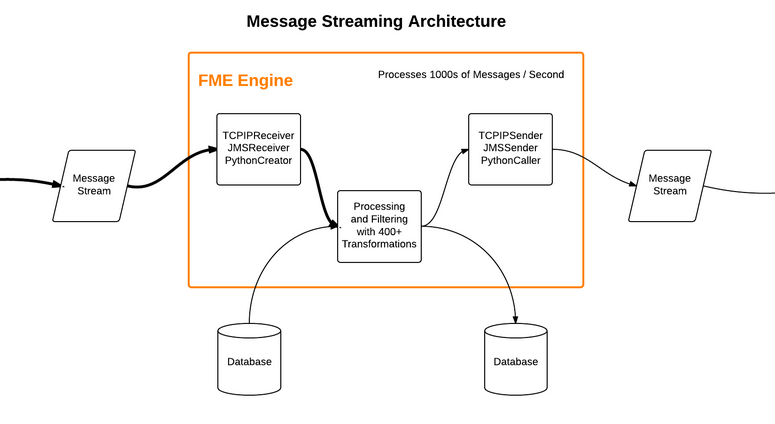Message Streaming Architecture
A Message Streaming architecture that both receives and sends messages looks like this:

- A stream of messages is read into the workspace via one of the available transformers, for example the JMSReceiver
- Each message is processed by any of the available FME transformers, according to the needs of the project
- A stream of messages is sent out of the workspace via one of the available transformers, for example the TCPIPSender
Although the diagram shows a continuous process, it is not necessary for all of these components to be used in a setup. If the system is required to only receive messages, then only a Receiver transformer is needed. Likewise, if the system is intended to only send messages, then only a Sender transformer is required.
If both receiving and sending messages is required, then all components are necessary. However it's still possible to split those actions up across several workspaces.
Databases
The Database components in this diagram are optional, but are very useful. Messages will usually need to be processed against some other datasets (for example overlaid against a geofence) and a database is the quickest solution for reading and writing data.
Data read from a database is intended to be used to process the incoming message. For example perhaps the message represents a point feature (maybe a vehicle location) that is used to filter against database data (maybe traffic conditions).
Data written to the database is usually to record a stream of message information. For example, perhaps each incoming message represents a point feature (a lightning strike) that needs to be written to a database for a historic record.
| Miss Vector says … |
|
Writing to a database in a High Capacity Message Streaming setup requires that the transaction interval is set to what value?
1. <Not Set> 2. Zero (0) 3. One (1) 4. Infinity (∞) |